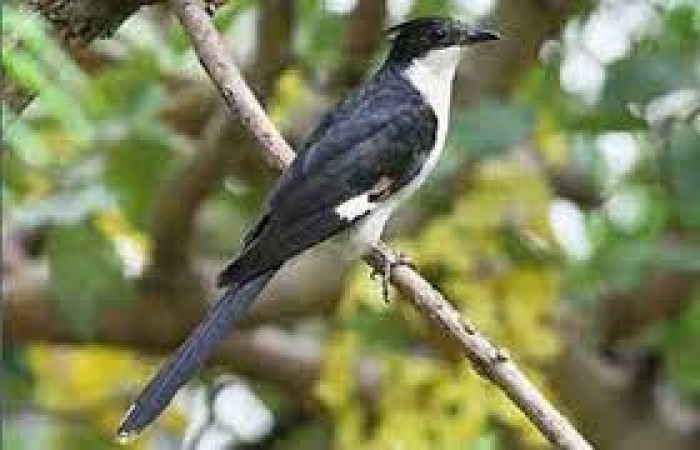
The Papiha Bird, also known as the Asian Koel, is a fascinating avian species that has captivated the interest of scientists and bird enthusiasts alike. Native to various regions across Asia, including India, Southeast Asia, and parts of China, the Papiha is renowned for its distinctive call and striking appearance. However, it is not merely its vocal prowess or colorful plumage that sets the Papiha apart; rather, it is the bird's remarkable behavior regarding water consumption that truly intrigues researchers and observers.
The Papiha Bird's Unique Behavior
Among the myriad of bird species that inhabit our planet, the Papiha stands out due to its unusual approach to hydration. Unlike most birds, which rely on regular access to drinking water to survive, the Papiha has adapted to a lifestyle where it consumes water only once a year. This infrequent drinking behavior is a subject of great interest and curiosity within the scientific community, prompting numerous studies and investigations aimed at unraveling the mysteries behind this remarkable phenomenon.
Annual Water Consumption: A Peculiar Habit
The Papiha Bird's annual water consumption is undoubtedly one of its most peculiar habits. While other birds regularly visit water sources to quench their thirst, the Papiha appears to have evolved a strategy that allows it to thrive with minimal water intake. This behavior has sparked speculation and debate among researchers, who seek to understand the underlying physiological, ecological, and evolutionary factors driving this unique adaptation.
Surviving on Moisture-Rich Foods
One of the key elements enabling the Papiha to sustain itself with minimal water consumption is its diet. Unlike some bird species that primarily rely on drinking water to meet their hydration needs, the Papiha has evolved to subsist on a diet rich in moisture-containing foods. Fruits, berries, and insects make up the bulk of the Papiha's diet, providing it with the essential hydration it requires to survive without the need for frequent visits to water sources.
Adaptation to Arid Environments
The Papiha's infrequent water consumption can be seen as an evolutionary adaptation to its natural habitat, which often consists of arid or semi-arid regions. In such environments, water sources may be scarce, erratic, or seasonal, making it challenging for resident wildlife to maintain adequate hydration levels. By reducing its reliance on drinking water and instead obtaining moisture from its food sources, the Papiha has found a way to thrive in these harsh and unpredictable landscapes.
Efficient Water Utilization
In addition to its reliance on moisture-rich foods, the Papiha has also evolved mechanisms to maximize the efficiency of water utilization within its body. Through physiological adaptations such as efficient kidney function and water-conserving metabolic processes, the bird is able to minimize water loss and retain moisture more effectively, further reducing its dependence on external sources of hydration.
Conservation of Energy
By minimizing the need for regular visits to water sources, the Papiha is able to conserve valuable energy that can be allocated towards other essential activities such as foraging, breeding, and maintaining territory. In environments where resources are limited and competition for food and mates is fierce, the ability to conserve energy can confer a significant advantage in terms of survival and reproductive success.
A Lesson in Adaptation
The behavior of the Papiha Bird serves as a compelling example of the remarkable adaptability of wildlife to their environments. Through the process of natural selection, species like the Papiha have evolved unique strategies for survival in response to the challenges posed by their habitats. By studying these adaptations, scientists gain valuable insights into the complex interplay between organisms and their ecosystems, shedding light on the mechanisms that drive evolutionary change over time.
Conclusion
In conclusion, the Papiha Bird's annual water consumption is a fascinating example of adaptation in the natural world. By relying on a combination of dietary specialization, physiological adaptations, and behavioral strategies, the Papiha has evolved to thrive in environments where water is scarce or unpredictable. The study of this remarkable bird not only enhances our understanding of avian biology and ecology but also underscores the resilience and ingenuity of life in the face of environmental challenges.
Ola electric scooter price reduced by Rs 25 thousand, S1
Prime Minister Modi's Address at UPGIS 2023: Focus on UP's Development Trajectory
Here's How Google Offers 300% Salary Hike to Retain Employees Amidst Tech Layoffs